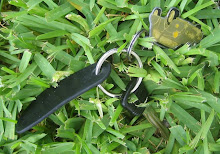Our first stop was at the Sedlec Ossuary. The Sedlec Ossuary is a small Roman Catholic chapel, located beneath the Cemetery Church of All Saints in Sedlec, a suburb of Kutná Hora in the Czech Republic. The ossuary contains approximately 40,000-70,000 human skeletons which have been artistically arranged to form decorations and furnishings for the chapel.

Then we arrived in Olomouc to spend the night. That evening we took a short tour of the city in a light rain. Olomouc has a population of around 110,000 people.
The Holy Trinity Column in Olomouc is a magnificent Baroque monument in the Czech Republic, built in 1716–1754 in honour of God. The main purpose was a spectacular celebration of Catholic Church and faith, partly caused by feeling of gratitude for ending a plague, which struck Moravia (now in the Czech Republic) between 1714 and 1716. The column was also understood to be an expression of local patriotism, since all artists and master craftsmen working on this monument were Olomouc citizens, and almost all depicted saints were connected with the city of Olomouc in some way. It is the biggest Baroque sculptural group in the Czech Republic. In 2000 it was inscribed on the UNESCO World Heritage List as "one of the most exceptional examples of the apogee of central European Baroque artistic expression".

In addition to Prague, Olomouc also has an astronomical clock. Dating originally from 1420, the clock was remodelled approximately once every century. When the retreating Nazi German army passed through Olomouc in the final days of the war in May 1945 they opened fire on the old astronomical clock, leaving only a few pieces (that can now be seen in the local museum). As a result of the serious damage the clock was reconstructed in the style of socialist-realism in the first years of communist rule in Czechoslovakia (late 1940s-early 1950s). The religious and royal figures were replaced with athletes, workers, farmers, scientists and other members of the proletariat, while the glockenspiel was altered to play three pieces of traditional local music.
The lower dial represents the earthly sphere and indicates minute, hour, day, month, year and phase of the moon. Also, the lower dial displays the "appropriate" name to be given at birth for each day of the year. The upper dial represents the heavenly sphere and shows a star map, the sun, earth and planets against a background of the twelve houses of the zodiac. The third and highest level is where the saints and apostles once paraded during the daily musical display (at 12 noon). Their role is now performed by faded-looking volleyball players, auto mechanics and factory workers.
The intricate background mosaic covers the clock's entire height of 14 metres and has representations of the twelve seasons and two traditional festival; the ride of the kings and the procession of maidens.

Various coat of arms of Olomouc throughout the ages.

One of Olomouc's six Baroque fountains. The fountains survived in such a number thanks to cautious policy of the city council. While most European cities were removing old fountains after they had built their water supply piping, Olomouc decided to keep them as water reservoirs in case of fire. This one depicts Julius Caesar, the legendary founder of the city.

Unfortunately, we were unable to enter St. Michael's Church. St. Michael's church appears quite plain from the outside. Upon entering, however, most first time visitors find their breath stolen away. Inside is one of the most beautiful baroque churches in Central Europe. One notable feature is a painting of an apparently pregnant Virgin Mary, quite rare in a catholic church.

The St. John Sarkander's chapel is a neo-baroque building is a design of E. Sochor from 1909 - 1912. The chapel was built in the place of the town jail. There is a torture chamber underground where St. John Sarkander was interrogated.
 Saint Wenceslas Cathedral in the distance.
Saint Wenceslas Cathedral in the distance.
Close-up of Saint Wenceslas Cathedral. Its main tower is tall 100,65 meters (328 feet) and so it is the 4th tallest building in the Czech Republic.

The Arion fountain in the Main Square depicts the legend of a poet thrown overboard and saved by a dolphin. It was specially designed to allow easy access to the water and is a favourite among children.


No comments:
Post a Comment